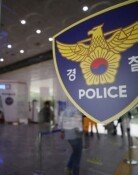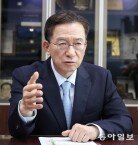Double-entry bookkeeping by 19th-century merchants discovered
Double-entry bookkeeping by 19th-century merchants discovered
Posted October. 30, 2013 08:20,
Fourteen volumes of accounting books from Gaeseong merchants, which contain financial records in a complete modern double-entry bookkeeping format for a period of 25 years from the late 19th century in the Joseon Dynasty, have been discovered. The prevailing theory is that people worldwide started using double-entry bookkeeping only after the onset of the 20th Century, but materials demonstrating that Kaesong merchants had used modern double entry bookkeeping method that encompasses balance sheet, income statement, and allocation of interest prior to that time have thus been discovered.
The 14 volumes of accounting books amounting to more than 1,000 pages, which are possessed by Park Yeong-jin, a descendant of a Gaeseong merchant, contain detailed accounting records that the Gaeseong merchants family recorded while engaging in ginseng farming and trade, cotton and cotton textile trade, and financial business from 1887 to 1912. They include documents ranging from books of original entry (accounting books that record in details debt and credit figures sourced from daily accounting, before registering in the ledger), general ledger, balance sheet, income statement, and allocation of profits to investors.
The accounting books are recorded in a modern double-entry bookkeeping method, which allows viewers to accurately figure out movement of assets, and profits and losses. Double-entry bookkeeping has been used since the Middle Age worldwide. The Middle Age style double entry bookkeeping only recorded financial data on commercial activities and financial activities in the debt and credit columns. This bookkeeping method continued to develop, and eventually evolved to the modern double entry bookkeeping system, which now includes balance sheet, and income statement designed for public disclosure in corporate activities, and cost management accounting designed for internal reporting.
Nowhere in the world, practical accounting records of a company have been discovered in perfect form that recorded the entire accounting process through the modern double entry bookkeeping system before the 20th Century, said Jeon Seong-ho, a professor at the Academy of Korean Studies who has been studying accounting books from the Park family. The materials have demonstrated that Korea a used systematic, modern management accounting technique in a unique form that was not influenced by China and Japan nor by the West in the late 19th Century.







